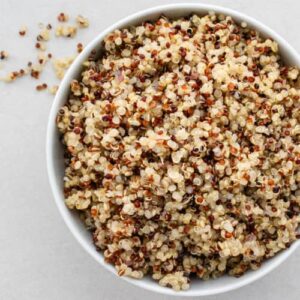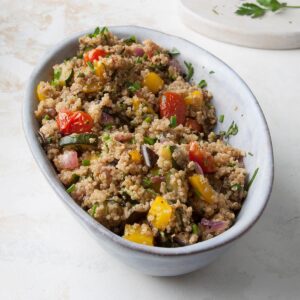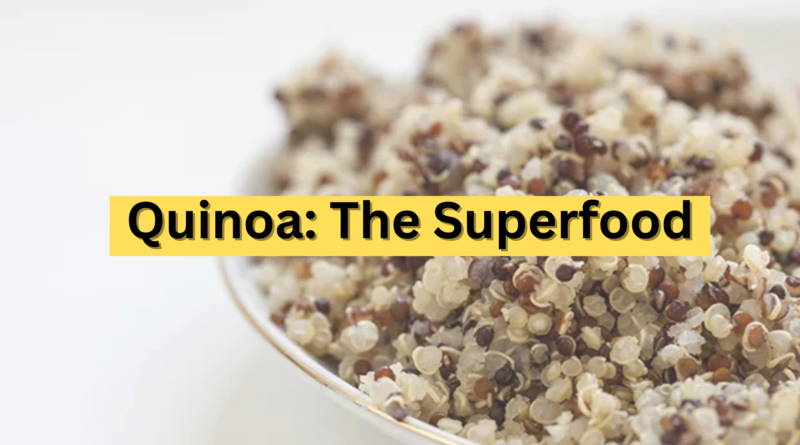Quinoa: Its History, Cultivation and Benefits
Quinoa is not just a grain; it’s a nutritional powerhouse with a fascinating history and a wide array of health benefits. As a versatile ingredient, it has become a staple for health-conscious eaters worldwide. Let’s delve deeper into its history, cultivation, and why it deserves a place on your plate.
The Rich History of Quinoa
Originating from the Andean region of South America, quinoa has been cultivated for over 5,000 years. It was revered by the Incas, who called it the “mother of all grains.” This crop sustained ancient civilizations with its ability to grow in tough environments. When Spanish colonists arrived in the 16th century, they suppressed quinoa cultivation, favoring wheat instead. However, in the 20th century, the quinoa experienced a resurgence as its nutritional benefits were rediscovered.
Today, quinoa is celebrated globally as superfood and is a key ingredient in diets aimed at better health and sustainability.
How Quinoa is Grown
Quinoa thrives in diverse climates, from the high altitudes of the Andes to the arid plains. It grows best in well-drained soil and requires minimal water, making it an eco-friendly crop. The plant produces colorful flowers, which give way to tiny seeds. These seeds are coated with saponin, a bitter-tasting compound that protects them from pests. Post-harvest, the seeds are processed to remove the saponin, making them ready for consumption.
The leading producers of quinoa today are Bolivia, Peru, and Ecuador, though it is now grown in other regions like North America, Europe, and Asia.
Nutritional Benefits of Quinoa
Quinoa’s nutrient profile is what truly sets it apart:
- Complete Protein: Quinoa contains all nine essential amino acids, making it a rare plant-based complete protein. It’s ideal for vegans and vegetarian.
- Rich in Fiber: Helps maintain a healthy digestive system and controls blood sugar levels.
- Packed with Micronutrients: Loaded with magnesium, iron, zinc, and potassium, quinoa supports bone health, energy production, and a strong immune system.

- Antioxidants: Quinoa contains quercetin and kaempferol, compounds that fight inflammation and oxidative stress.
- Low Glycemic Index: Quinoa releases energy slowly, making it perfect for those managing diabetes or looking for sustained energy.
Culinary Versatility of Quinoa
Quinoa’s mild, nutty flavor and fluffy texture make it an excellent base for countless dishes:
- Salads: Combine quinoa with fresh vegetables, nuts, and a zesty dressing for a quick and healthy meal.

- Rice Substitute: Use it in place of rice in curries or stir-fries for a lighter, more nutritious option.
- Breakfast Bowls: Cook quinoa with almond milk and top it with fruits and nuts for a protein-packed start to your day.
- Soups and Stews: Add cooked quinoa to enhance the texture and nutritional value of your soups.
- Burgers: Mix quinoa with beans, spices, and breadcrumbs to make vegetarian burger patties.
Environmental Benefits of Quinoa
Quinoa is not only good for your health but also for the planet:
- Requires less water compared to other grains.
- Grows in nutrient-poor soil, reducing the need for fertilizers.
- Adapts to extreme climates, making it a resilient crop for changing weather patterns.
Tips for Cooking Quinoa
To get the most out of quinoa, follow these tips:
- Rinse Before Cooking: Always rinse quinoa under cold water to remove any remaining saponin.
- Use the Right Ratio: Cook 1 cup of quinoa with 2 cups of water or broth for fluffy results.
- Enhance Flavor: Toast quinoa in a pan before boiling to bring out its nutty aroma.

Conclusion
Quinoa’s journey from ancient fields in the Andes to modern kitchens is a testament to its versatility and value. Packed with nutrients, easy to cook, and environmentally friendly, quinoa is more than just a food trend, it’s a sustainable choice for better health and a healthier planet.
Incorporating quinoa into your diet is simple and rewarding. Whether you’re seeking a protein boost, a gluten-free option, or just a delicious meal, quinoa has you covered. Give this ancient superfood a try and experience its benefits firsthand!
Visit FGITO and start your journey as Home Chef.




